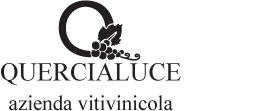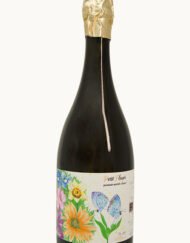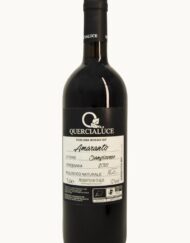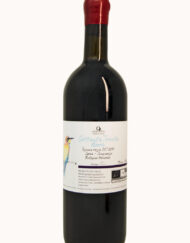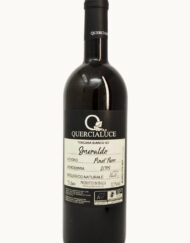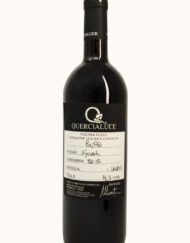How to make the base wine for the Traditionl Method in the Organic way
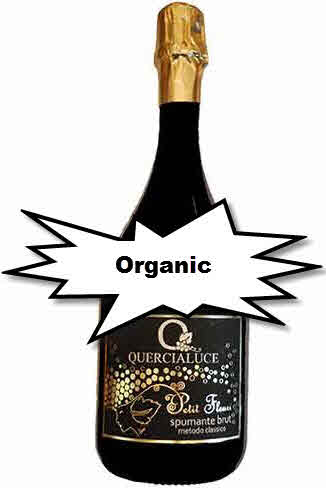
Let us examine now a part of the production process of the sparkling wine QUERCIALUCE champenoise by comparing it with the term “organic”.
After the harvest the grapes are destined to become sparkling wine are destemmed and then pressed. In other cases the grapes are pressed directly without being destemmed.
Thereafter, the grape juice product is placed in a container where decant for 24 hours and , after being decanted , the fermentation begin.
What is decanting?
The decanting process is used to remove all coarse particles which are contained in the grape and to have therefore a must , as far as possible, clean.
During this procedure must is in contact with the air and the oxygen often causes brown coloration of the must and of the future wine, with the consequent need to introduce chemical products to remove this color. During this process unpleasant substances can be produced.
What are the practices to prevent the oxidation of juice?
The answer seems obvious: you have to remove the air.
But it seems that musts heavily protected from oxidation (usually with inert gases ) are likely to take brown color then, in later stages, when it become wine, with the need of chemical interventions even more important.
In 1970-80 was introduced the process of hyperoxygenation, we give oxygen to the must, so that the polyphenols will oxidize ( take brown color ) and then eliminate them with the racking . We also note that the inert gases to be products require energy, almost always electricity, which involves introduction of the CO2 in the air, which does not happen with the hyper-oxygenation, a procedure that has to be considered natural .
All types of grapes produce the same brown color?
No, it isn’t. For example grapes for sparkling wine like pinot noir is improved in quality by a hyper-oxygenation, grapes like chardonnay give variable answers according to the area of cultivation and grapes like malvasia or sauvignon lose their aromas during iperoxygenation. The latter grapes must be protected obviously, while the Pinot Noir can be treated in a natural way with oxygen also during pressing.
Hence the importance of choosing the right variety of grapes for what you want to do. At QUERCIALUCE we chose the pinot noir to do the Petit Fleuri also for this reason.
Are there enzymes that can facilitate the oxygenation and then create damage to the must?
Yes, there are two very important enzymes: tyrosinase and laccase.
While the tyrosinase is present in all the grapes, the laccase is presented only in grapes affected by Botrytis cinerea, fungal disease that appears in the presence of moisture and in late harvests.
There is no problem for botrytis cinerea since we remember that the grapes are harvested very early, because it must content low alcohol content and therefore is unlikely to be affected by botrytis.
The enzyme tyrosinase, instead, acts on the cinnamic acids that, through complex transformations, produce quinones that are responsible of the brown coloration. The rate of consumption of oxygen , in the presence of tyrosinase is huge, passes from 2/mg/l/ minute in the must with tyrosinase to 2/mg/l / day in wine where there is not tyrosinase.
Is there a system to protect the grapes during this process?
Yes, there is. It is the glutathione, which has a very strong antioxidant action (which today is often administered as anti -aging in humans). Each type of grape contains more or less, then simply choose a grapes or a strain that contain a lot of glutathione avoid to have to administer during crushing. Choose the right variety allows for a natural product, but it is also enjoyable.
During the sedimentation can we protect the must?
First we have to say that the same process of settling and racking cause the elimination of colored and unpleasant substances. The addition of sulfur dioxide as an anti oxidant is possible, but not sought. Also vitamin C is an antioxidant, but its effect is not lasting and involves other complications.
The rapid heating to 60 ° C must delete oxidase enzymes, but we must have machines complex and much expensive. We have also a large energy use in heating and cooling must.
As already said before, we can operate in the presence of inert gas, so that does not happen, must don’t have contact with oxygen.
You can cool the must in two ways: with dry ice or refrigeration equipment. Dry ice is comfortable, you buy, acts and leaves no residue, but, placed in the containers, did not last long. and has a fairly high cost. It also requires a lot of energy to produce. The refrigerating machines produce a constant temperature, have a acceptable cost and can work during the day in connection with a photovoltaic system, so without introducing CO2 into the atmosphere and with the costs of using null. This is the method chosen by QUERCIALUCE to produce the Petit Fleuri. If you are in cold latitudes just open the cellar door .
Which is the next step to produce the base wine for the traditional method?
During fermentation, we can choose three ways of using yeast: yeast purchased, yeast selected in the cellar, yeasts present in the cellar freely.
What is the yeast?
Yeasts are part of the animal kingdom, such as bacteria or insects. Each of them has different survival mode . Many animals to survive, in the winter or at critical times, change some aspects of their existence.
We think at the bears that hibernate and do not drink or eat for months. Even yeasts, to overcome the critical phase winter, hibernate in a particular manner: they dry out and transform their structure by eliminating the water. In these conditions can withstand hundreds of degrees below zero and be prepared for a new life just water and heat it will allow. Natural living beings remain in the cellar, on earth, in containers or frozen in laboratories.
Purchased yeasts.
The purchased yeasts are selected, what does it mean? It means that in a laboratory yeasts are selected with certain characteristics and then they have been dried, ready to share with the right temperature and water. For example yeasts that do not produce sulfur dioxide, so that during the winemaking we can add the quantity of so2 that we would like.
Yeasts in the cellar.
For example, in the cellar of QUERCIALUCE we have collected the yeast from the tanks and walls looked under the microscope and selected in order to know what kind of yeast occur during wine making.
Spontaneous yeasts.
It is left to chance, we expected that the fermentation starts outdoors and at the end you see what happened. Also in this case you can examine the must to know what kind of yeast is working .
Are features of the must important for fermentation?
Yes, it’s very important. Let’s take a practical example.
I have a grape from which I’ll get base wine for sparkling wine. The grapes are picked early with content of about 10 percent of alcohol. The must, however, have also a higher acidity with pH around 3-3.2 . This leads to an important fact. The action of SO2 produced by yeast or introduced is much more effective at low pH that high pH. It means that to protect the base wine for sparkling wine PH3, I need for example, 10 mg / l of SO2 , instead to protect a wine at pH 3.4 requires 4 times more.
On the contrary to what is commonly thought that a sparkling wine base you can have in the tank until February-March, vintage bottling , with very low doses of SO2 , because the pH is lower and thus the wine more acid.
Can you get an organic basic wine for the traditional method?
Yes, you can, as we have seen.
You have to start with a correct grapes like Pinot Noir, the wine is produced in the presence of air, then you cool it and then you do the sedimentation of it. The fermentation is done spontaneously with the yeasts in the cellar, which produce just enough of SO2, with a low pH, to maintain optimal must and then the wine until bottling.
This is the procedure that we use at QUERCIALUCE for the Petit Fleuri.
